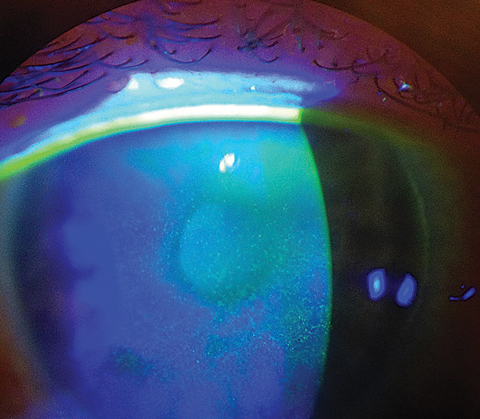 |
| Dry eye disease is more prevalent among people of certain ethnicities, study shows. Photo: Scott G. Hauswirth, OD. Click image to enlarge. |
Previous studies have found a possible relationship between asthma and dry eye disease (DED), but no meta-analysis has assessed this relationship until now. Researchers recently conducted a literature review to pinpoint a potential association between the two.
Six independent studies with a total of 45,215 asthma patients and 232,864 healthy control subjects were included. Findings suggest that the prevalence of DED was higher in the asthma group, and in the subgroup analysis by ethnicity, Australian, Caucasian and Asian patients showed an increased risk of DED.
“Our current findings suggest that asthma patients have a higher risk of developing DED than non-asthmatic patients, and this significant correlation could be observed in different ethnicities, except for Arabians,” the authors explained. “It cannot be ignored that dry eye questionnaires are not only useful tools for characterizing the type and severity of dry eye, but also for evaluating the effectiveness of therapeutic interventions. Therefore, in at least 50% of the observational studies included in this meta-analysis, the diagnosis of DED was based on survey instruments (questionnaires) rather than on a clinical basis.”
The authors noted that most patients with allergic diseases such as asthma have allergic conjunctivitis, and allergic conjunctivitis itself can induce or aggravate dry eye. In addition,
DED and allergic conjunctivitis have certain similarities in signs and symptoms. “Therefore, we cannot rule out the possibility that some allergic conjunctivitis in this population may be misdiagnosed as dry eye, and the results should be interpreted cautiously,” the authors noted.
Even though the association between asthma and DED is significant in Australians, Caucasians and Asians, the authors noted that this may not reflect the cause and effect if unidentified confounders play into the results.
“This data suggests that patients with asthma may be at risk of developing a comorbid diagnosis of DED and should try to avoid risk factors and strengthen the prevention of DED,” the authors concluded.
Huang Q, Zheng Y, Zhang C, et al. Association between asthma and dry eye disease: a meta-analysis based on observational studies. BMJ Open. December 10, 2021. [Epub ahead of print]. |

